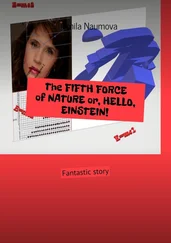Michael Faraday - On the various forces of nature and their relations to each other
Здесь есть возможность читать онлайн «Michael Faraday - On the various forces of nature and their relations to each other» — ознакомительный отрывок электронной книги совершенно бесплатно, а после прочтения отрывка купить полную версию. В некоторых случаях можно слушать аудио, скачать через торрент в формате fb2 и присутствует краткое содержание. Жанр: foreign_antique, foreign_prose, на английском языке. Описание произведения, (предисловие) а так же отзывы посетителей доступны на портале библиотеки ЛибКат.
- Название:On the various forces of nature and their relations to each other
- Автор:
- Жанр:
- Год:неизвестен
- ISBN:нет данных
- Рейтинг книги:3 / 5. Голосов: 1
-
Избранное:Добавить в избранное
- Отзывы:
-
Ваша оценка:
- 60
- 1
- 2
- 3
- 4
- 5
On the various forces of nature and their relations to each other: краткое содержание, описание и аннотация
Предлагаем к чтению аннотацию, описание, краткое содержание или предисловие (зависит от того, что написал сам автор книги «On the various forces of nature and their relations to each other»). Если вы не нашли необходимую информацию о книге — напишите в комментариях, мы постараемся отыскать её.
On the various forces of nature and their relations to each other — читать онлайн ознакомительный отрывок
Ниже представлен текст книги, разбитый по страницам. Система сохранения места последней прочитанной страницы, позволяет с удобством читать онлайн бесплатно книгу «On the various forces of nature and their relations to each other», без необходимости каждый раз заново искать на чём Вы остановились. Поставьте закладку, и сможете в любой момент перейти на страницу, на которой закончили чтение.
Интервал:
Закладка:
Let us now leave this subject which I have written upon the board under the word Force – Gravitation – and go a step further. All bodies attract each other at sensible distances. I shewed you the electric attraction on the last occasion (though I did not call it so); that attracts at a distance: and in order to make our progress a little more gradual, suppose I take a few iron particles [dropping some small fragments of iron on the table]. There, I have already told you that in all cases where bodies fall, it is the particles that are attracted. You may consider these then as separate particles magnified, so as to be evident to your sight; they are loose from each other – they all gravitate – they all fall to the earth – for the force of gravitation never fails. Now, I have here a centre of power which I will not name at present, and when these particles are placed upon it, see what an attraction they have for each other.

Fig. 12.
Here I have an arch of iron filings (fig. 12) regularly built up like an iron bridge, because I have put them within a sphere of action which will cause them to attract each other. See! – I could let a mouse run through it, and yet if I try to do the same thing with them here [on the table], they do not attract each other at all. It is that [the magnet] which makes them hold together. Now, just as these iron particles hold together in the form of an elliptical bridge, so do the different particles of iron which constitute this nail hold together and make it one. And here is a bar of iron – why, it is only because the different parts of this iron are so wrought as to keep close together by the attraction between the particles that it is held together in one mass. It is kept together, in fact, merely by the attraction of one particle to another, and that is the point I want now to illustrate. If I take a piece of flint and strike it with a hammer, and break it thus [breaking off a piece of the flint], I have done nothing more than separate the particles which compose these two pieces so far apart, that their attraction is too weak to cause them to hold together, and it is only for that reason that there are now two pieces in the place of one. I will shew you an experiment to prove that this attraction does still exist in those particles, for here is a piece of glass (for what was true of the flint and the bar of iron is true of the piece of glass, and is true of every other solid – they are all held together in the lump by the attraction between their parts), and I can shew you the attraction between its separate particles; for if I take these portions of glass, which I have reduced to very fine powder, you see that I can actually build them up into a solid wall by pressure between two flat surfaces. The power which I thus have of building up this wall is due to the attraction of the particles, forming as it were the cement which holds them together; and so in this case, where I have taken no very great pains to bring the particles together, you see perhaps a couple of ounces of finely-pounded glass standing as an upright wall. Is not this attraction most wonderful? That bar of iron one inch square has such power of attraction in its particles – giving to it such strength – that it will hold up twenty tons weight before the little set of particles in the small space, equal to one division across which it can be pulled apart, will separate. In this manner suspension bridges and chains are held together by the attraction of their particles; and I am going to make an experiment which will shew how strong is this attraction of the particles. [The Lecturer here placed his foot on a loop of wire fastened to a support above, and swung with his whole weight resting upon it for some moments.] You see while hanging here all my weight is supported by these little particles of the wire, just as in pantomimes they sometimes suspend gentlemen and damsels.
How can we make this attraction of the particles a little more simple? There are many things which if brought together properly will shew this attraction. Here is a boy’s experiment (and I like a boy’s experiment). Get a tobacco-pipe, fill it with lead, melt it, and then pour it out upon a stone, and thus get a clean piece of lead (this is a better plan than scraping it – scraping alters the condition of the surface of the lead). I have here some pieces of lead which I melted this morning for the sake of making them clean. Now these pieces of lead hang together by the attraction of their particles; and if I press these two separate pieces close together, so as to bring their particles within the sphere of attraction, you will see how soon they become one. I have merely to give them a good squeeze, and draw the upper piece slightly round at the same time, and here they are as one, and all the bending and twisting I can give them will not separate them again: I have joined the lead together, not with solder, but simply by means of the attraction of the particles.
This, however, is not the best way of bringing those particles together – we have many better plans than that; and I will shew you one that will do very well for juvenile experiments. There is some alum crystallised very beautifully by nature (for all things are far more beautiful in their natural than their artificial form), and here I have some of the same alum broken into fine powder. In it I have destroyed that force of which I have placed the name on this board – Cohesion, or the attraction exerted between the particles of bodies to hold them together. Now I am going to shew you that if we take this powdered alum and some hot water, and mix them together, I shall dissolve the alum – all the particles will be separated by the water far more completely than they are here in the powder; but then, being in the water, they will have the opportunity as it cools (for that is the condition which favours their coalescence) of uniting together again and forming one mass. 7 7 Page 55. Crystallisation of Alum. – The solution must be saturated – that is, it must contain as much alum as can possibly be dissolved. In making the solution, it is best to add powdered alum to hot water as long as it dissolves; and when no more is taken up, allow the solution to stand a few minutes, and then pour it off from the dirt and undissolved alum.
Конец ознакомительного фрагмента.
Текст предоставлен ООО «ЛитРес».
Прочитайте эту книгу целиком, купив полную легальную версию на ЛитРес.
Безопасно оплатить книгу можно банковской картой Visa, MasterCard, Maestro, со счета мобильного телефона, с платежного терминала, в салоне МТС или Связной, через PayPal, WebMoney, Яндекс.Деньги, QIWI Кошелек, бонусными картами или другим удобным Вам способом.
1
Page 13. The opening lecture was twice postponed on account of Dr. Faraday’s illness.
2
Page 22. Platinum , with one exception, the heaviest body known, is 21½ times heavier than water.
3
Page 22. Aluminium is 2½ times heavier than water.
4
Pages 23 and 24. Power or Property in Water. – This power – the heat by which the water is kept in a fluid state – is said, under ordinary circumstances, to be latent or insensible . When, however, the water changes its form, and, by uniting with the lime or sulphate of copper, becomes solid , the heat which retained it in a liquid state is evolved.
Читать дальшеИнтервал:
Закладка:
Похожие книги на «On the various forces of nature and their relations to each other»
Представляем Вашему вниманию похожие книги на «On the various forces of nature and their relations to each other» списком для выбора. Мы отобрали схожую по названию и смыслу литературу в надежде предоставить читателям больше вариантов отыскать новые, интересные, ещё непрочитанные произведения.
Обсуждение, отзывы о книге «On the various forces of nature and their relations to each other» и просто собственные мнения читателей. Оставьте ваши комментарии, напишите, что Вы думаете о произведении, его смысле или главных героях. Укажите что конкретно понравилось, а что нет, и почему Вы так считаете.












